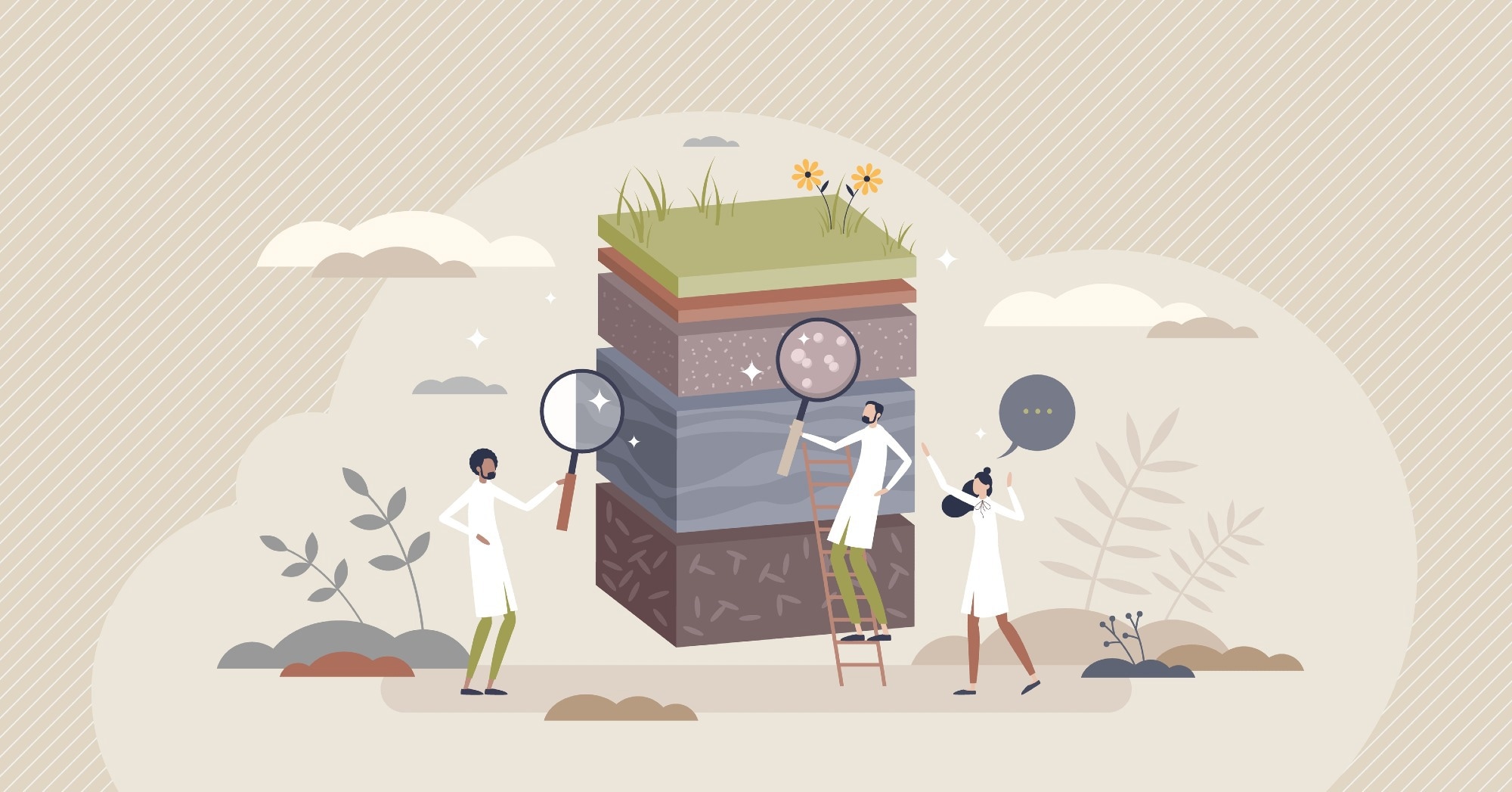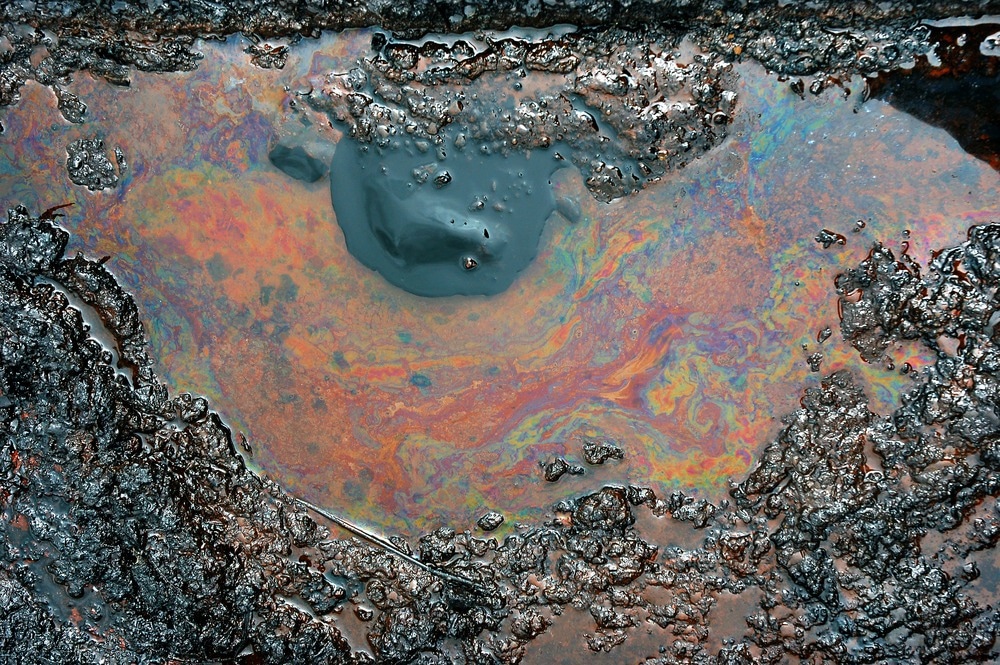Soil pollution encompasses many types of contaminants, from heavy metals to microplastics. The accumulation of pollutants in soil poses considerable risks to human health and the environment. As a result, bioremediation methods and policies targeting soil pollution have become a key priority.

Image Credit: VectorMine/Shutterstock.com
Defining and understanding soil pollution
The increasing intensity of human activity has had many impacts on the environment. The air, soil, and water around the world have experienced changes in physical and chemical properties due to agriculture, industrial production, and large-scale urbanization. Specifically, pollution has emerged as a considerable challenge affecting all elements of the environment, especially over the last century.
Of particular concern has been the degradation of soil health due to pollution. Soil pollution refers to toxic chemicals (that can be pollutants or contaminants) in soil systems. If pollutants are present in high enough concentrations, soil pollution poses a risk to animal and human health and ecosystem functioning. With the increasing dependence on food production due to a growing human population, soil pollution has become a central issue in modern agricultural practices and conservation strategies.
Indeed, The Status of the World's Soil Resources Report (SWSR) identified soil pollution as one of the main soil threats affecting global soils and their ecosystem services. Therefore, extensive research has been conducted to identify, quantify, and remediate soil pollution worldwide. This is sometimes difficult due to the diversity of pollutants, ranging from heavy metals and biopharmaceuticals to oil spills and chemical fertilizers.
In response, the definition of soil pollution has been refined over time and now relates to the presence in the soil of a chemical or substance out of place and/or present at a higher-than-normal concentration that has adverse effects on any non-targeted organism. This demonstrates the extent to which soil pollution encompasses many sources of pollution, including natural contaminants, typically occurring in soil, but at levels that can be high enough to cause adverse effects.
Compounds that could be considered contaminants when occurring in too high concentrations (e.g., phosphates, carbonates, sulfates, nitrates) that occur naturally in soil are mainly formed through soil microbial activity and decomposition of plants and animals. Compounds can also get into the soil from rain or shallow groundwater, wind activity, or soil disturbance. However, anthropogenic causes are the mechanisms that contribute the most to the severity, spread, and frequency, of soil pollution.
Consequences of soil pollution on human wellbeing
Human activities pollute soil range from agricultural practices that use pesticide chemicals to urban or industrial wastes or radioactive emissions that contaminate the soil with various toxic substances. The impacts of soil pollution affect plants, animals, and humans alike. For humans, pollutants from soil may be ingested through bioaccumulation in plants, inhaled, or be transmitted through touch if individuals are in proximity to contaminants. The severity of the effects of pollutants in the soil varies with age, general health status, and other factors, such as the type of pollutant or contaminant inhaled or ingested.
However, studies have found that children are usually more susceptible to exposure to contaminants as they are more frequently in close contact with the soil and have lower thresholds for disease, making them at higher risk than adults. The consequences of contaminants found in soil can vary, but the most frequent pollutants are petroleum-derived products (e.g., polycyclic aromatic hydrocarbons, polychlorinated biphenyls) and fertilizers, which are carcinogenic and mutagenic products.
In recent years, concerns are emerging about new forms of contaminants. This includes pharmaceuticals, endocrine disruptors, hormones, and toxins, which are frequently found. Other pollutants being found include micropollutants such as bacteria and viruses, and microplastics, which may cause drastic effects for humans if ingested. With the improvement of existing techniques in ecotoxicology as well as the development of new techniques, many new types of pollutants are being considered. Yet, the exact implications of these new contaminants remain unclear.

Image Credit: Mykola59/Shutterstock.com
Further implications of soil pollution: agriculture, ecology, and bioremediation
Identifying the most damaging sources of soil pollution and the areas in which pollution occurs is a priority in addressing the issues associated with soil pollution. This can be done with large-scale mapping efforts, as done in a 2021 study by Jia et al. 2021, who used geostatistical interpolation methods (GIMs) to identify key polluted areas that can be targeted. However, understanding the mechanisms of pollutant accumulation and how pollutant concentration can vary is also important.
In a 2019 review, Huang et al. examined where heavy metal soil pollution may occur the most. Authors reviewed over 300 articles over the last decade and found that although heavy metal accumulation has decreased in recent years, areas surrounding industrial areas continue to accumulate heavy metals significantly. As a result, this has led to extensive pollution in vegetable and paddy fields, which can affect food production and human health if produce is consumed.
To better regulate the potential consumption of pollutants, trace elements of mineral fertilizers provide a crucial indicator for policies. However, a 2019 study found that soil pollution is more complex than previously thought, as trace element concentrations can change depending on soil properties such as age, organic and inorganic matter content, and abundance of plants. Such findings demonstrate the difficulty of addressing soil pollution, which may vary extensively.
In response to widespread soil pollution, remediation of polluted soils has become increasingly valuable. Remediation methods such as chemical inactivation or sequestration in landfills are being gradually replaced by empirically studied, science-based biological methods such as microbial degradation or phytoremediation. This allows better and more ecologically-mindful methods of addressing polluted soils.
The accumulation of knowledge has led to the development of risk assessments used to evaluate the sources of soil pollution and whether it poses a risk to the environment and human health. Promisingly, these approaches are becoming more standardized and more comprehensive. Nevertheless, the most important strategy is limiting human activity's pollution, specifically from agriculture and industrial sources, which can be achieved through the global implementation of sustainable soil management practices.
Sources:
- Huang, Y., Wang, L., Wang, W., Li, T., He, Z., & Yang, X. (2019). Current status of agricultural soil pollution by heavy metals in China: A meta-analysis. Science of The Total Environment, 651, 3034–3042. https://doi.org/10.1016/j.scitotenv.2018.10.185
- Jia, X., Cao, Y., O'Connor, D., Zhu, J., Tsang, D. C., Zou, B., & Hou, D. (2021). Mapping soil pollution by using drone image recognition and machine learning at an arsenic-contaminated agricultural field. Environmental Pollution, 270, 116281. https://doi.org/10.1016/j.envpol.2020.116281
- Organization, A. F. (2018). Soil Pollution: a Hidden Reality. Food & Agriculture Organization.
- Zwolak, A., Sarzyńska, M., Szpyrka, E., & Stawarczyk, K. (2019). Sources of Soil Pollution by Heavy Metals and Their Accumulation in Vegetables: a Review. Water, Air, & Soil Pollution, 230(7). https://doi.org/10.1007/s11270-019-4221-y
Further Reading
Last Updated: Jun 27, 2022